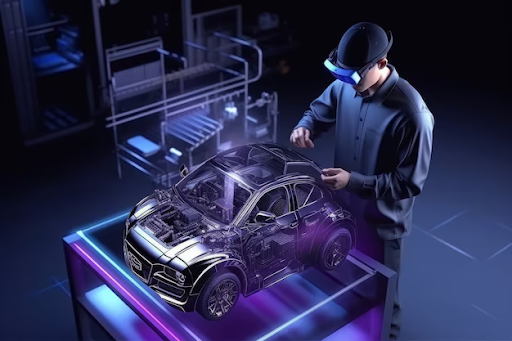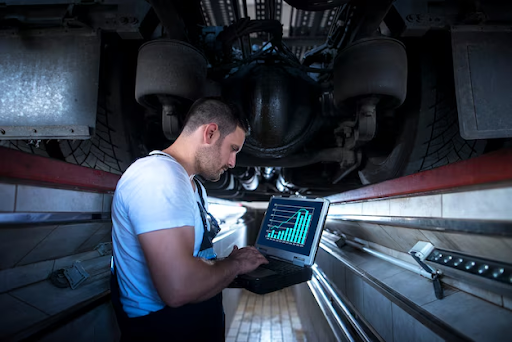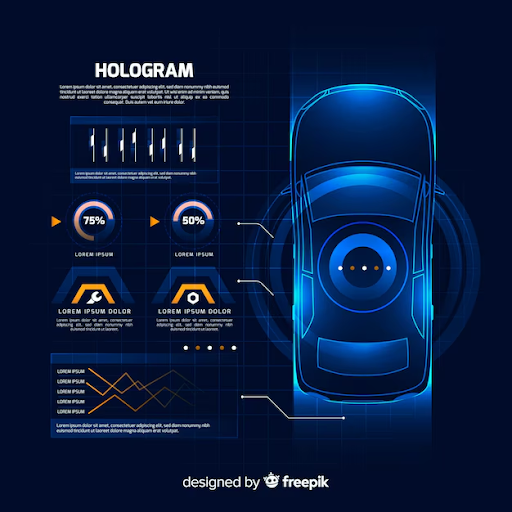Table of Content
- X-Ray in Automotive Component Inspection
- Advantages of Using X-Ray Inspection
- Computed Tomography (CT) in Automotive Component Inspection
- Advantages of Using Computed Tomography (CT)
- Conclusion
When it comes to automotive manufacturing, ensuring the safety and reliability of components is crucial. Computed tomography in automotive component inspection and X-Ray in automotive component inspection are the key ways to do this, along with non-destructive testing (NDT).
Among NDT methods for automotive components, X-Ray and computed tomography are the top choices because they are precise and effective. These technologies let manufacturers check car parts without harming them, ensuring each piece meets high-quality standards.
X-Ray in Automotive Component Inspection

X-Ray in Automotive Inspection Technology use high-energy electromagnetic radiation to penetrate materials and create images of their internal structures. This allows for the detection of internal defects that are not visible to the naked eye.
Waygate Technologies created the high-quality, durable radiographic film family known as Agfa Structurix NDT X-Ray Film. It offers a range of films, from ultrafine grain to high speed, in various sheet sizes and packaging options.
How X-Ray Inspection Works?
During X-Ray inspection, an X-Ray source emits radiation that passes through the component being inspected. A detector on the opposite side captures the radiation that emerges, creating an image that reveals the internal structure of the component
X-Ray in automotive component inspection are commonly used to inspect welds, castings, and composite materials in the automotive industry. It helps identify cracks, voids, and other internal defects that could compromise the integrity of the component.
Applications of X-Ray in Automotive Component Inspection
X-Ray helps with Quality control in automotive NDT processes, allowing for the detection of defects such as cracks, voids, and porosity in critical components like welds and castings.
1. Engine Components
- Cylinder Heads: X-Ray testing helps identify internal defects such as porosity and cracks that could lead to engine failure.
- Pistons: Ensures pistons are free from internal voids and other flaws that could compromise performance.
2. Transmission Systems
- Gears and Shafts: Detects internal cracks and voids, ensuring the integrity and durability of transmission components.
- Clutch Plates: Inspects for internal inconsistencies that might affect performance and lifespan.
3. Brake Systems
- Brake Calipers: Ensures no internal defects that could lead to brake failure.
- Brake Discs: Checks for internal cracks that might not be visible externally.
Advantages of Using X-Ray Inspection
The main advantage of using X-Ray inspection without damaging the component makes this method ideal. A few of the advantages are discussed below.
1. Detailed Imaging and Flaw Detection
X-Ray inspection provides detailed images that allow for the precise detection of flaws and defects. This level of detail is crucial for ensuring the quality and safety of automotive components.
2. Speed and Efficiency
X-Ray inspection is a relatively fast process, allowing for the quick assessment of multiple components. This speed enhances the overall efficiency of the manufacturing process.
3. Non-Invasiveness
Since X-Ray inspection does not require the destruction of the component being tested, it is a non-invasive method that preserves the integrity of the part.
Computed Tomography in Automotive Component Inspection

Computed tomography in automotive component inspection is an advanced imaging technique that uses X-rays to create detailed cross-sectional images. These slices can be combined to form a 3D image of the object’s internal structure.
How CT Inspection Works?
In CT inspection, the component is placed on a rotating platform, and an X-Ray source and detector move around it. Multiple images are taken from different angles, and a computer processes these images to create a detailed 3D representation of the component.
CT inspection is used to analyse complex components, such as engine parts, transmissions, and composite materials. It provides a view of the internal structure, allowing for the detection of even the smallest defects.
Phoenix offers x-ray CT solutions for NDT and metrology, enhancing accessibility and cost savings. NDT Products Limited and Waygate Technologies offer a wide range of x-ray inspection and CT solutions, including mobile conventional film, computed and digital field radiography, 2D X-ray inspection systems, and 3D computed tomography.
Applications of Computed Tomography in Automotive Component Inspection
Computed Tomography is utilised in automotive component inspection to detect internal defects and ensure accurate geometries, providing valuable insights into quality control and manufacturing processes.
1. Safety Components
- Airbags: CT scanning is used to inspect the internal structure of airbags, ensuring there are no defects that could prevent deployment during an accident.
- Seatbelt Mechanisms: Examines the intricate internal components to ensure reliable performance.
2. Fuel System Components
- Fuel Injectors: Inspects for internal blockages, cracks, and other defects that could affect fuel delivery and engine performance.
- Fuel Pumps: Ensures the internal components are free from flaws that could lead to failure
3. Complex Assemblies
- Electronic Control Units (ECUs): CT scanning is used to inspect the internal circuitry and components for defects that could affect the performance of the vehicle’s electronic systems.
- Sensors: Ensures that sensors, such as those used in anti-lock braking systems (ABS) and stability control, are free from internal defects.
Advantages of Using Computed Tomography (CT)

Using Computed tomography in automotive component inspection has numerous advantages, from 3D imaging to high resolution. It allows for detailed analysis of internal structures and defects that may not be visible with other methods, leading to more accurate and reliable results.
1. 3D Imaging and Internal Structure Analysis
CT provides 3D images that offer a complete view of the internal structure of a component. This is particularly useful for analysing complex parts and assemblies.
2. High Resolution and Accuracy
Because CT inspection has such high resolution and accuracy, it is possible to find very small flaws that other methods might miss.
3. Versatility in Inspecting Various Materials
CT can be used to inspect a wide range of materials, including metals, plastics, and composites. Its versatility makes it a valuable tool in the automotive industry.
Conclusion
X-rays and computed tomography for automotive component inspection are invaluable tools. Non-destructive testing in automotive industry provides detailed insights into the internal structures of components, helping manufacturers ensure the highest quality and safety standards. As technology continues to advance, the capabilities of X-rays and CT will only improve, further enhancing their role in automotive manufacturing.
NDT Products ensures safety by detecting potential issues before they become problems. We provide better technology, ultimately saving time and money in the long run. By investing in our products, you are investing in the safety and success of your operations.